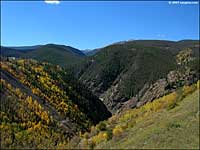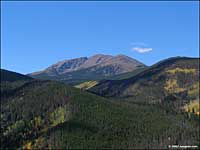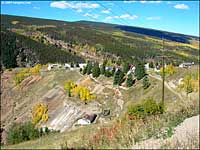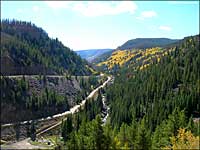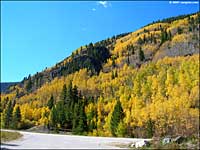
Top of the Rockies Scenic Byway
Minturn to Camp Hale
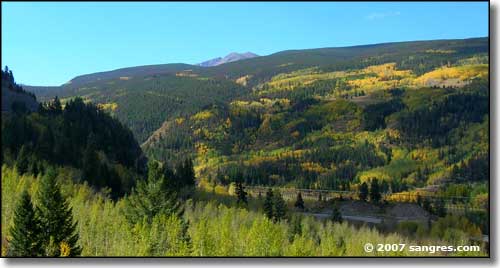
The Eagle River Valley, south of Minturn, Notch Mountain just peeking its notched head up far to the southwest
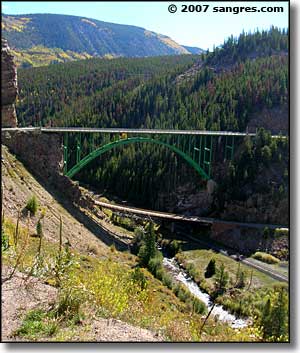
From Minturn, the Top of the Rockies Scenic Byway skirts the western edge of some glorious layered-rock mountains as it makes its way up the Eagle River Valley. On the northwestern flank of Battle Mountain, there's a couple of switchbacks so the road can climb comfortably up above the river. The views north and west here are spectacular. There's several good turnouts so take advantage of them.
The Eagle River Canyon is below, and it's steep, narrow and deep. This is an area with a few old mining roads off to the east but some of them are barricaded with locked gates: which indicates that they are either very dangerous sites, the road is really bad or the mine is still being worked. Not too much farther and you'll come to a big turnout overlooking what's left of the Gilman mining camp. It doesn't look like Gilman was abandoned all that long ago but there's lots of fencing along the highway to keep folks out. The road goes back into the canyon, then comes out again right over the mine works before turning back in along the southwestern flank of Battle Mountain. There's another good turnout at the southern end of Gilman.
This photo to the left with the two bridges was taken a bit further south, just before the turn to Red Cliff. The main road stays on the upper bridge and continues south coming to Camp Hale in just a few minutes. The road into Red Cliff turns east on the very left edge of the photo, just off the upper bridge. At the lowest level in the photo, and acutally just out of sight to the right is a water flow gauging station, and a bunch of roads that head off in all directions into the forest.
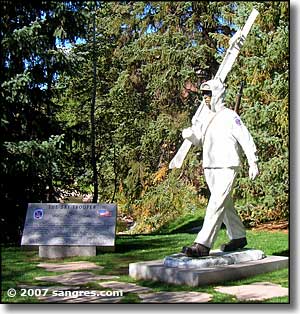
Camp Hale is where the celebrated 10th Mountain Division of the US Army trained for combat during World War II. At this camp, our soldiers learned all the survival skills they needed to be able to effectively carry the war to the Germans in places like Scandinavia and the Alps in the dead of winter. While they were training, they also developed effective winter clothing and weaponry. They also learned the finer points of skiing: both Nordic and downhill.
After the war, some of the 10th Mountain Division veterans are the people who are primarily responsible for establishing skiing as a viable winter sport in this country and for building the very first big ski areas and resorts in America. The photo to the right is of the "Ski Trooper Memorial" in Vail (it was at least one of these ski troopers who was instrumental in establishing the ski resort we now know as Vail). I salute them for their bravery, their honor, their dedication to their country, and to their knowledge of how to do things right and have a really good time in the snow. Some of the camps and cabins these men built for use in their training missions are still in use at various places along the Continental Divide Trail.
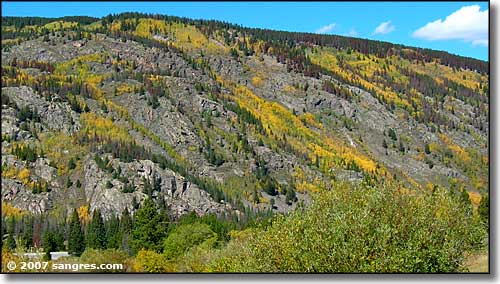
Granite outcroppings, White River National Forest
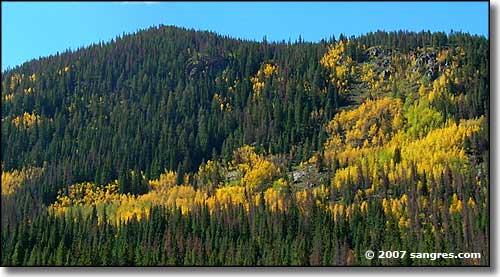
Near Camp Hale
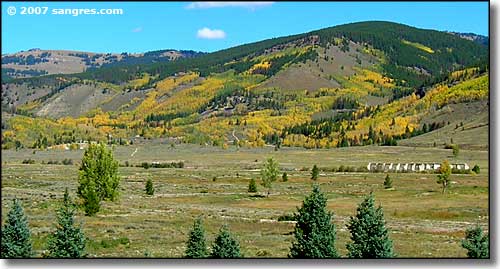
Looking northeast across the remains of Camp Hale
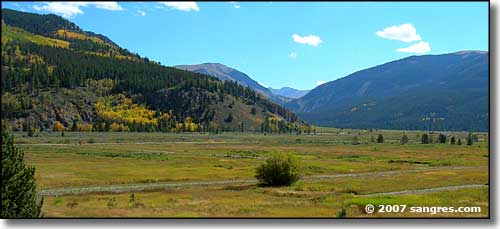
Looking east across the remains of Camp Hale
To return, use the Back button of your browser.




